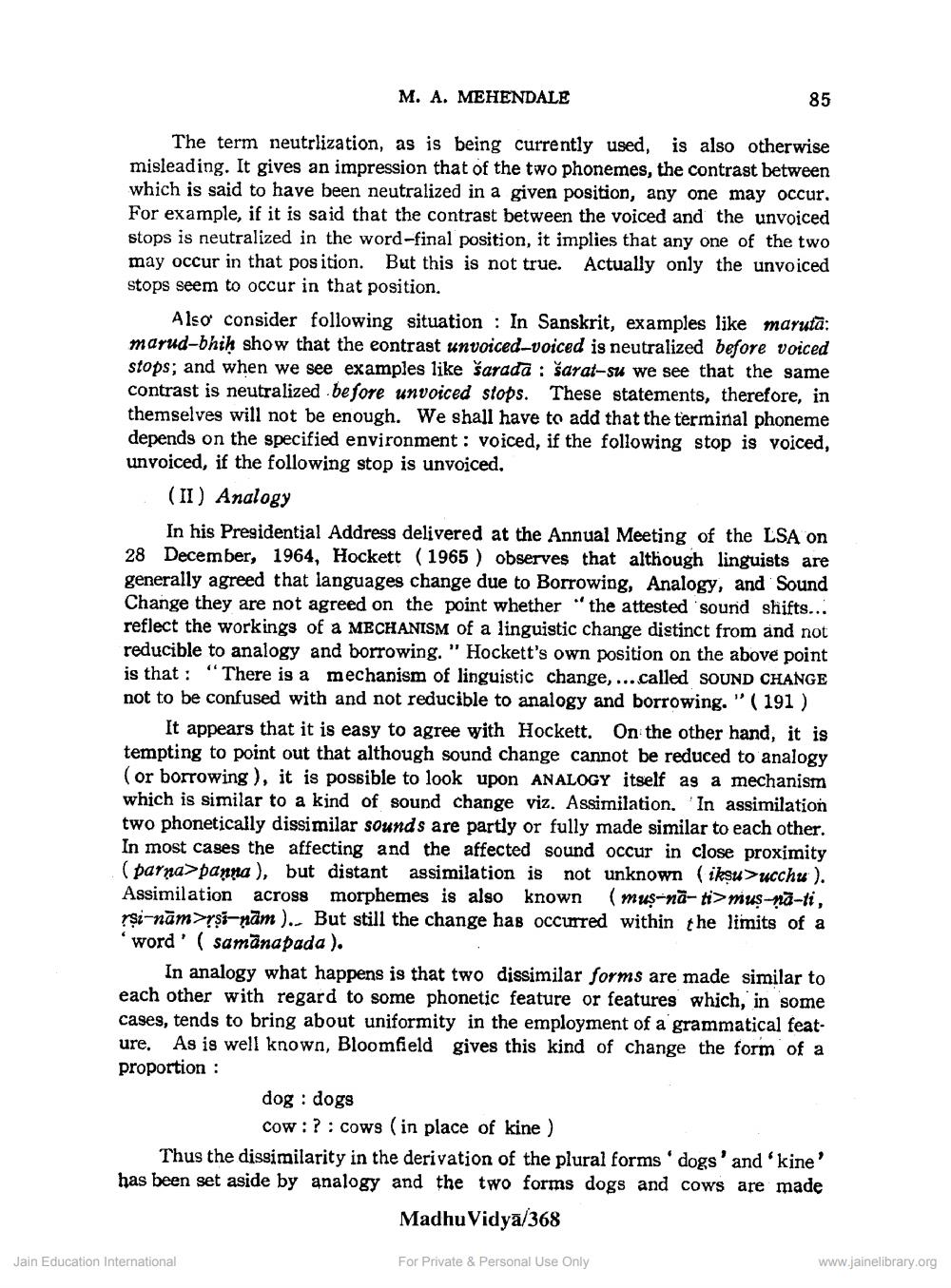________________
M. A. MEHENDALE
The term neutrlization, as is being currently used, is also otherwise misleading. It gives an impression that of the two phonemes, the contrast between which is said to have been neutralized in a given position, any one may occur. For example, if it is said that the contrast between the voiced and the unvoiced stops is neutralized in the word-final position, it implies that any one of the two may occur in that position. But this is not true. Actually only the unvoiced stops seem to occur in that position.
Also consider following situation In Sanskrit, examples like maruta: marud-bhih show that the eontrast unvoiced-voiced is neutralized before voiced stops; and when we see examples like šarada: šarat-su we see that the same contrast is neutralized before unvoiced stops. These statements, therefore, in themselves will not be enough. We shall have to add that the terminal phoneme depends on the specified environment: voiced, if the following stop is voiced, unvoiced, if the following stop is unvoiced.
(II) Analogy
In his Presidential Address delivered at the Annual Meeting of the LSA on 28 December, 1964, Hockett (1965) observes that although linguists are generally agreed that languages change due to Borrowing, Analogy, and Sound Change they are not agreed on the point whether "the attested sound shifts... reflect the workings of a MECHANISM of a linguistic change distinct from and not reducible to analogy and borrowing." Hockett's own position on the above point is that: "There is a mechanism of linguistic change,...called SOUND CHANGE not to be confused with and not reducible to analogy and borrowing."(191)
85
It appears that it is easy to agree with Hockett. On the other hand, it is tempting to point out that although sound change cannot be reduced to analogy (or borrowing), it is possible to look upon ANALOGY itself as a mechanism which is similar to a kind of sound change viz. Assimilation. In assimilation two phonetically dissimilar sounds are partly or fully made similar to each other. In most cases the affecting and the affected sound occur in close proximity (parna panna), but distant assimilation is not unknown (iku>ucchu ). Assimilation across morphemes is also known (mus-na-ti>mus-na-ti, rṣi-nām>rṣi-nam)... But still the change has occurred within the limits of a
'word' (samanapada).
In analogy what happens is that two dissimilar forms are made similar to each other with regard to some phonetic feature or features which, in some cases, tends to bring about uniformity in the employment of a grammatical feature. As is well known, Bloomfield gives this kind of change the form of a proportion:
dog: dogs
Cow: ? cows (in place of kine)
Jain Education International
Thus the dissimilarity in the derivation of the plural forms' dogs' and 'kine' has been set aside by analogy and the two forms dogs and cows are made
Madhu Vidya/368
For Private & Personal Use Only
www.jainelibrary.org




